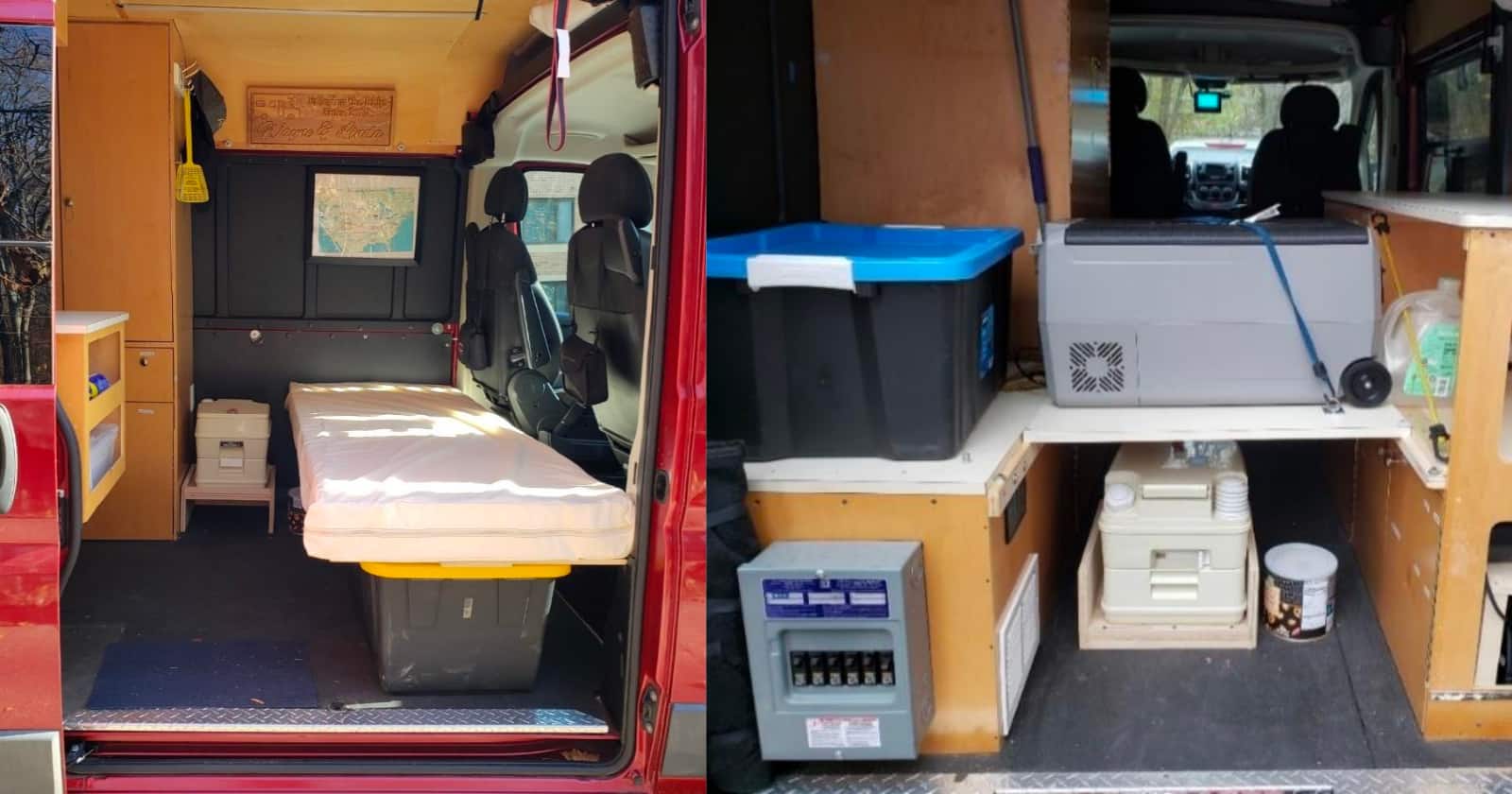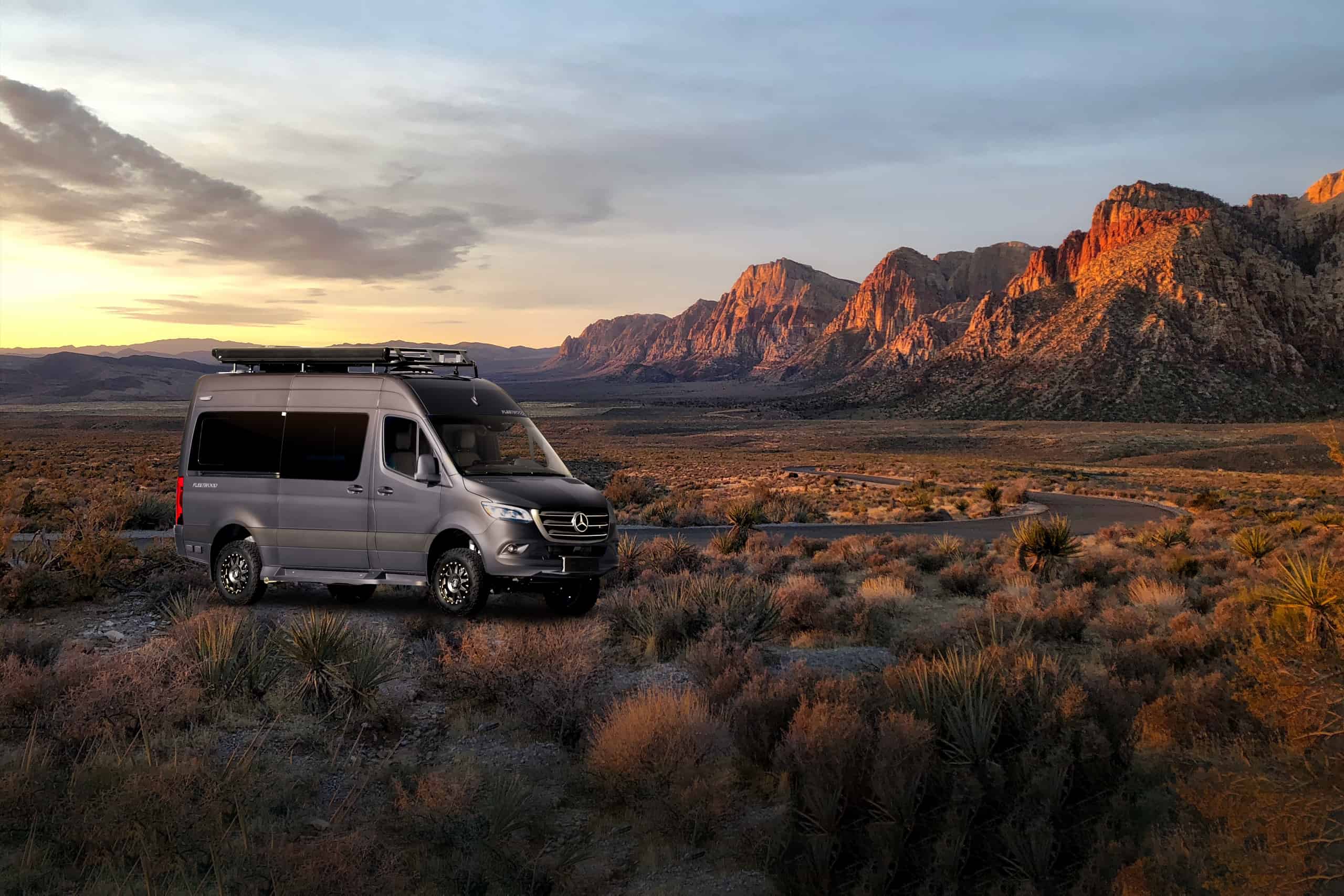Which Camper Van Reigns Supreme for the Nomadic Life?
When it comes down to choosing a full-size van to convert into your next home on wheels, the primary battle is often the Mercedes-Benz Sprinter versus the Ford Transit.
While there are other choices on the U.S. market, such as the beefy Ford E-Series, the Ram ProMaster, and options by Peugeot and Volkswagen in other countries, the two former vans offer what many vanlifers want in a mobile home.
These two vehicles include a good combination of interior space within a lower-weight vehicle, decent gas mileage, and the option for both diesel and gas engines. In addition, while some manufacturers have ceased building some smaller vans, such as the Ram ProMaster City and the Ford Transit Connect, the Sprinter and Transit come out with new versions every year.
So what van should you choose for your next conversion? Each vehicle has its own amenities and comes with a wide range of initial prices and conversion costs. Below we will go over the pros and cons of each, and we’ll conclude with which one is our favorite choice and why.
Sprinter Vans
Pros of Sprinter Vans:
The Sprinter van is probably one of the most popular conversion options on the road—for several good reasons.
There is no doubt that the Mercedes-Benz quality is reflected in the Sprinter’s design and performance. The company is also always innovating its design, and the new eSprinter is already in the works.
The Sprinter comes in several different layouts, including a cargo van, crew van, and passenger van. Each of these layouts offers longer wheelbases as well. If you need that extra interior space, the vans come in a 144” long and 170” wheelbase. Both a standard roof and a high roof are also available.
Several different powertrains are also available, including a 4-cylinder diesel standard output, 4-cylinder diesel high output, and 4-cylinder diesel high output in AWD. The diesel option can be both a selling point and a deterrent. A diesel engine is more fuel-efficient than a gas engine but does require a special diesel mechanic if a breakdown does happen.
One of the main benefits of buying a Sprinter is that their models are consistently better when it comes to 4×4 capabilities. This seems to be more important these days as vanlifers get pushed farther into the backcountry.
Cons of Sprinter Vans:
The cons for the Sprinter mostly rest on price and when things go wrong on the road.
The brand new Sprinter, compared to a brand new Ford with similar features, can be about $10,000 more than the Ford. This is usually due to the fact that the Sprinter comes with AWD while on the Ford, you can add in the AWD as an option.
In addition to the up-front cost, you will most likely pay a lot more to get your Sprinter serviced. That is, if you can find a mechanic to work on a Mercedes-Benz engine. Some Sprinter owners claim that they have had to wait for weeks to either find a mechanic or the mechanic needs to keep their van in the garage for a long period of time.
The final con is that if you are a diesel-lover, then the Sprinter is a given. If you want a gas engine, then the Sprinter is out. These vans only come with a diesel option and well as diesel idiosyncrasies.
Ford Transit Vans
Pros of Ford Transit Vans:
The main pro for the Ford Transit van is that you can pick up a brand-new model for around $10,000 to even $15,000 less than a brand-new Sprinter van. This is the main reason that many vanlifers choose the Transit over the Sprinter.
Along with the upfront cost, the maintenance on a Ford Transit is going to be less expensive as well. Many dealerships and mechanics can easily work on a Ford engine versus a Mercedes-Benz engine, and parts are more readily available off the shelf or in smaller communities.
While the Transit doesn’t have the 170” wheelbase option like the Sprinter, it does have a few extra inches of standing headroom. Along with the extra headroom, the customizations and packages available from Ford are impressive.
These customizations are geared toward on-the-road living and include a heavy-duty tow package, RV prep package, tinted and privacy glass, keyless entry, and an engine block heater.
While the Ford gas engines are less fuel-efficient than the diesel Sprinter engines, the Transits do come with V6 engines rather than the 4-cylinder engines provided by Mercedes-Benz. Ford also has an option for a 3.5L EcoBoost® V6 engine.
Cons of Ford Transit Vans:
For the Transit, the cons mostly focus on its off-road capabilities and the gas engine.
Overall, gas engines don’t last as long as diesel engines. In addition, the option for using biodiesel is also not in the cards. Many van dwellers will go with the Sprinter if 4WD is the biggest concern, and it’s also helpful that the Sprinter has a bit more clearance than the Transit without any kind of aftermarket lifts or adjustments.
One final con for the Transit is that with current fuel prices (as of fall of 2023), fueling up a gas engine will hurt the wallet a bit more than filling up on diesel. Of course, this can change at any time, but that V6 engine is a thirsty one.
Sprinter Versus Ford Transit: Which Van Should You Choose?
Now, the choice between the two vans will really depend on what version, layout, and year you decide to get. In addition, what you build out and put into the van will also affect weight, driving capabilities, interior space, and power when it comes to driving at elevation.
Is being off-road more important, or would you rather save some money? Does quality matter the most, or would you rather have a more reliable engine that can be worked on by most mechanics?
I have to admit that the look of the Sprinter beats the Ford hands down. The Sprinter just looks tighter and beefier than the Transit.
However, my only experience with a Sprinter is that the people I know who own one have had to take it to the shop several times over the last few years. The last time, it was in the garage for over a month.
When things go well, Sprinter is the best choice. When things go wrong, Ford is the choice.
Because of its ease of use, options, and lower cost, the Ford Transit rises to the top in this battle. In addition, Ford seems to be really listening to the van dweller crowd. The new 2023 Transit Trail with the Upfitter Package is something to look into.
It features many of the bells and whistles that many vanlifers want, including improved off-road capabilities and a more robust tow package.




Why in the world would anyone want to buy a Sprinter? The German engineers love to overcomplicate everything they build. Also, If your away from home and your Sprinter needs a part from Germany, your trip just got extended by 3 weeks minimum. Furthermore, oil changes are super expensive and that’s IF you can get an appointment for one. Stay away people. Seriously, stay away from Sprinters.
Where do you get your fuel comparisons? Diesel is notoriously $1/gal higher cost than gasoline